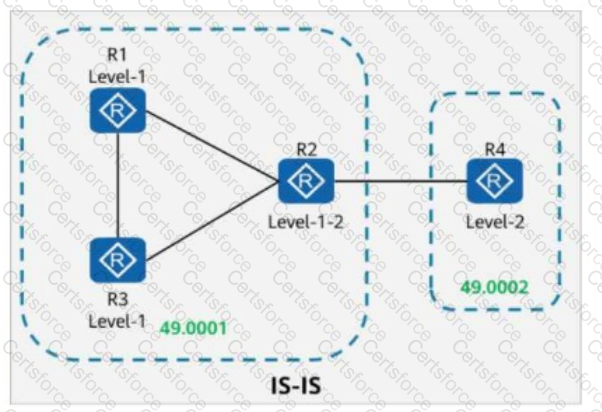Comprehensive and Detailed In-Depth Explanation:
Understanding the IS-IS Network Structure in the Question:
Router Roles & IS-IS Levels:
R1 and R3: Level-1 routers.
R2: Level-1-2 router (interconnects Level-1 and Level-2 areas).
R4: Level-2 router.
Key Command Used: default-route-advertise always level-1
This command forces R1 to advertise a default route (0.0.0.0/0) to all Level-1 routers.
In an IS-IS network:
Level-1 routers do not see Level-2 routes unless a default route is provided.
The default route is propagated only within the Level-1 area and does not affect Level-2 routers unless explicitly redistributed.
Route Distribution Analysis:
R1 (Level-1) imports the default route and advertises it to all Level-1 routers.✅ R1 has the default route.
R3 (Level-1) is in the same Level-1 area as R1, so it receives the default route from R1.✅ R3 has the default route.
R2 (Level-1-2) connects Level-1 and Level-2. Since it participates in Level-1, it also learns the default route from R1.✅ R2 has the default route.
R4 (Level-2) is not in Level-1 and does not receive the default route unless it is explicitly redistributed from Level-1 to Level-2, which is not stated in the question.❌ R4 does NOT have the default route.
Final Conclusion:
R1, R2, and R3 have the default route.
R4 does not have the default route.
Thus, the correct answer is:✅ R1, R2, and R3 have the default route in their routing tables.
[Reference:, HCIP-Datacom-Advanced Routing & Switching Technology V1.0 – IS-IS Default Route Advertisement, Huawei Official HCIP-Datacom Study Guide – IS-IS Level-1 and Level-2 Routing Concepts, Huawei Documentation on default-route-advertise always level-1 Command, , , , ]

Submit